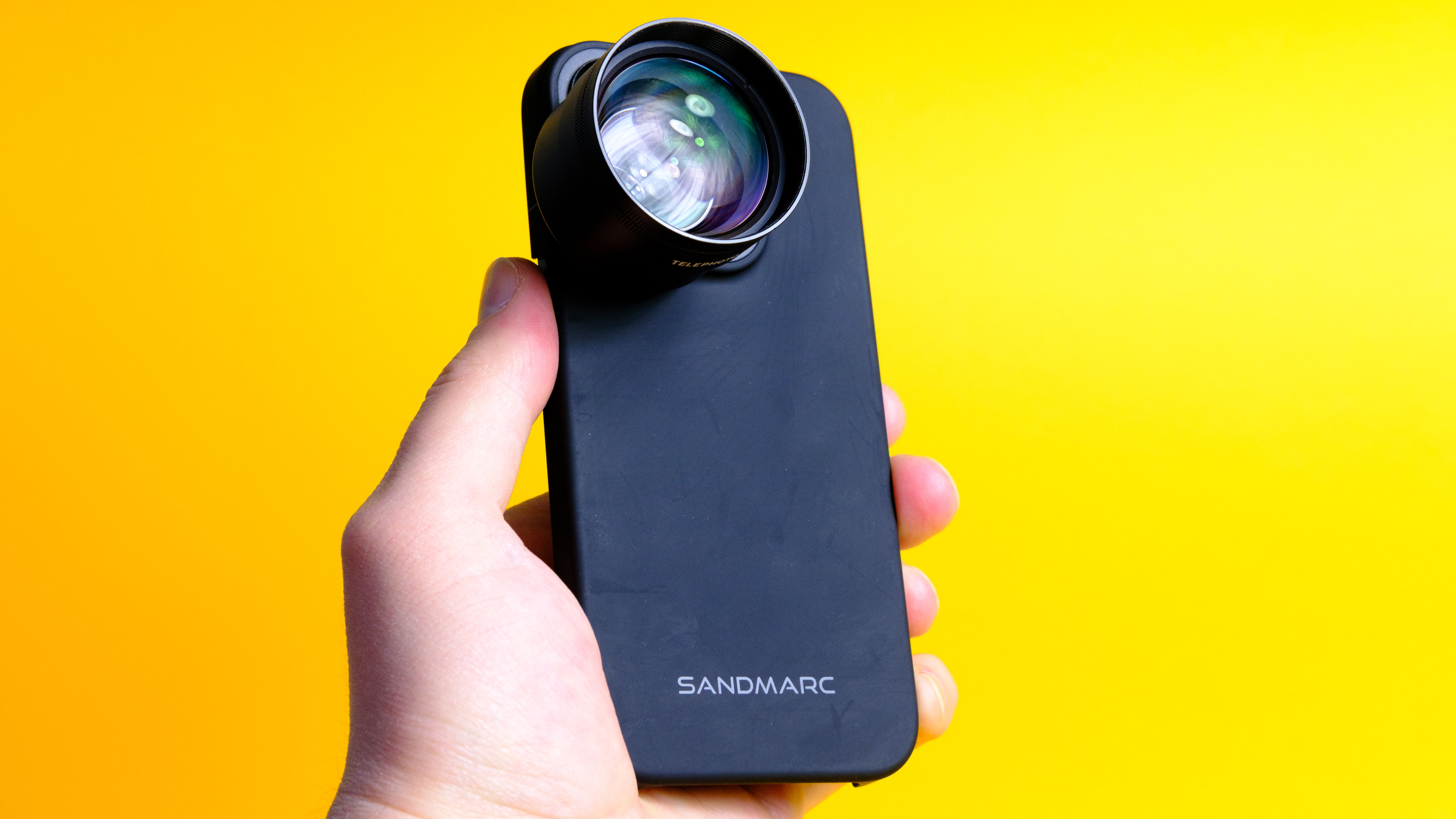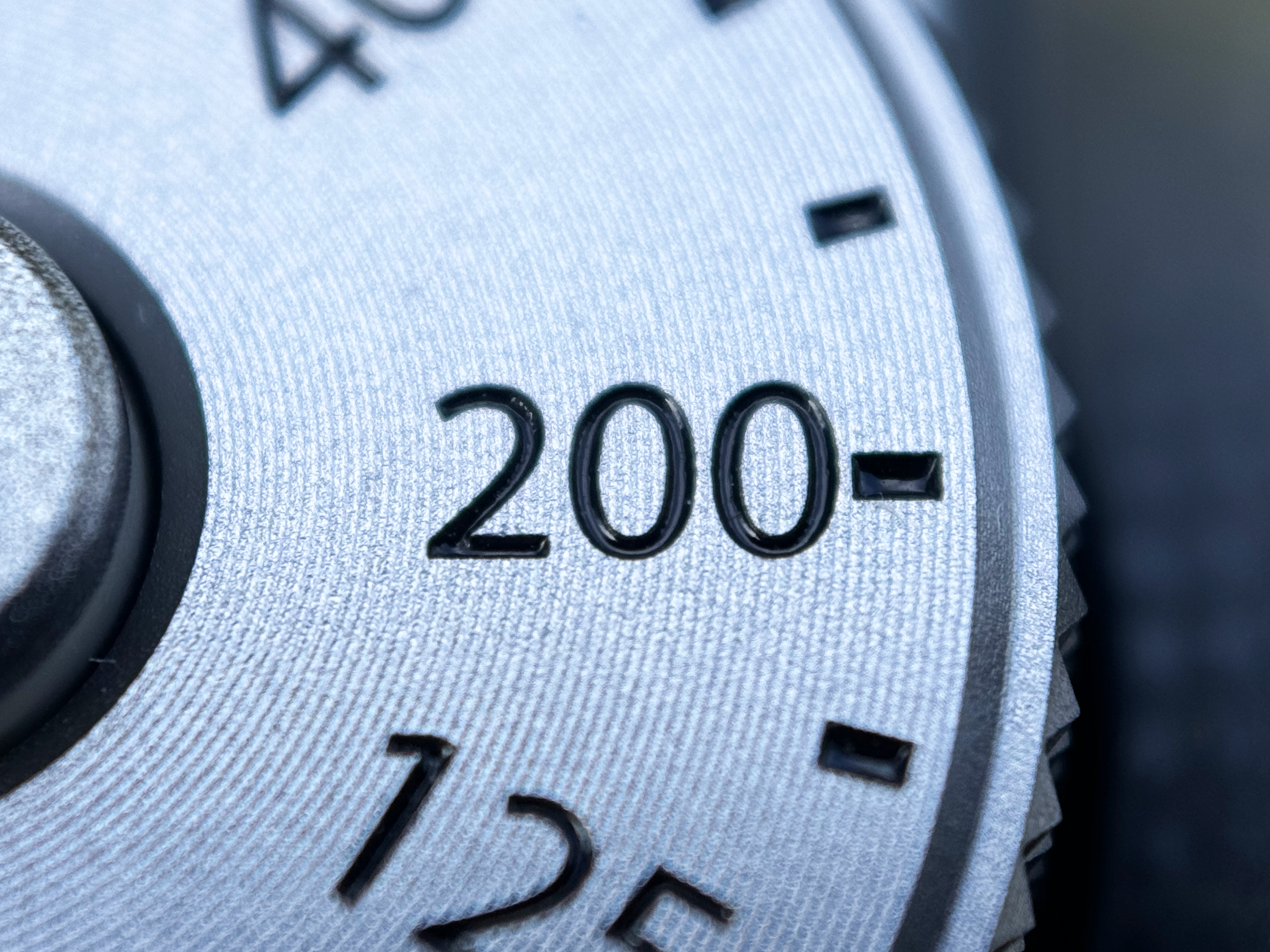
If you’re an avid iPhone photographer feeling a little limited by your phone’s camera features, Californian lens manufacturer Sandmarc has you covered.
Sure, the iPhone 15 Pro Max has the latest and greatest camera tech Apple has to offer, but there’s always a natural limit to the photographic potential of smartphones thanks to their compactness, which limits the size and quality of lenses. Smartphone cameras also have to be great multi-purpose cameras, meaning their lenses lack the special abilities and characteristics of, for example, Macro or Anamorphic lenses.
By attaching one of the best iPhone lenses, you can increase the optical capabilities of your smartphone and expand your creative horizons for a fraction of the price of a full interchangeable lens mirrorless camera.
Sandmarc’s lenses are some of the best on the market, boasting stellar optical and build quality with very few drawbacks. Find out more in our full Sandmarc iPhone lenses review.
Editor's note: we’ve currently only tested Sandmarc’s 58mm Telephoto and 25mm Macro lenses. We’ll add to this review when we’ve tested their other lenses, so make sure to stay locked to Tom’s Guide in the meantime.
Sandmarc iPhone lens review: Price & availability

Sandmarc sent us its 58mm 2x Telephoto lens ($129) and 25mm Macro lens ($99) for the iPhone 15 Pro. These are cheaper than the corresponding lenses from rival manufacturer Moment ($150 for Tele; $140 for Macro).
Sandmarc stocks a wide variety of lenses for the iPhone 15 Pro, including Wide, Anamorphic, Telephoto Macro, 6x Telephoto Ultra Zoom and Microscope. The company also stocks lenses for every iPhone model back to the iPhone 7. You can buy all its lenses directly from Sandmarc. Unlike Moment, these lenses will only fit iPhones.
We also tested out Sandmarc’s black iPhone 15 Pro case ($39), which features screw threads around the camera lenses to ensure easy and perfect fitment, as well as the Polarizing filter ($79).
Sandmarc iPhone lens review: Design

The Sandmarc iPhone lenses I tested were built very well, featuring metal lens housings and threads. The Telephoto lens was quite heavy, but this didn’t cause any issues when it was attached to my iPhone. The 25mm Macro lens is small by comparison, but also has a surprising weight to it given its size. Far from making the lenses cumbersome, this weight adds to their premium feel — good lenses shouldn’t feel too light.

I would definitely recommend buying one of Sandmarc’s cases alongside your lenses. Each lens comes with a clip on mount, but this gets in the way of the screen and can also slip around in use. The case holds everything firmly, exactly where it should be, which will be especially useful if using one of the bulkier telephoto models.

Each lens comes with a plastic lens and thread cap, and with its own zip-up case for secure transport. The cases are too big for pockets but each lens also comes with a smaller felt pouch for keeping in pockets. Strangely, the lens pouch for the larger tele lens was the same size as the one for the much smaller macro lens. This meant that the telephoto lens only just fit and was a pain to get in and out.
Sandmarc lens review: Telephoto lens performance
I was impressed by the performance of Sandmarc’s 58mm Telephoto lens. Firstly, thanks to its 2x magnification, it’s a great way to get extra reach optically to get closer to your subjects. In the gallery below, the first image is shot using the iPhone’s main lens at 1.5x magnification with the Sandmarc lens fitted. The second image was taken using the iPhone’s main lens at 1.5x magnification without the Sandmarc lens fitted, and is zoomed much further out.


The benefit of using optical zoom (i.e. using lenses) instead of relying wholly on the iPhone’s digital zoom is that optical zoom results in a sharper image for the same magnification. The first image in the gallery below is the same photo as above, taken with the iPhone’s main lens at 1.5x magnification with the Sandmarc lens fitted. The second image is taken without the Sandmarc lens, this time using the iPhone’s digital zoom to match the framing. The Sandmarc photo is much sharper in the centre — especially noticeable in the detail of the black cast iron gazebo.




When pairing the Sandmarc lens with the iPhone’s telephoto lens, things get a little less impressive, although the Sandmarc lens is still better overall. At moderate digital zooms, the iPhone tele lens actually delivers similar results to the Sandamarc lens. As you can see in this gallery below (Sandmarc image first, iPhone digital zoom second), there’s very little difference in sharpness in the center, although the Sandmarc probably comes out on top (only just), as the “Keep Dry’ writing on the cast iron gazebo is slightly more defined.


As you increase the digital zoom on the iPhone, though, sharpness starts to drop dramatically. The Sandmarc telephoto lens allows you to use less digital zoom to achieve the same frame, meaning sharper images that retain more of the detail. In the images below, the Sandmarc image (first) is much sharper than the iPhone image (second) which is at its maximum 15x digital zoom. The decorations on the gazebo are difficult to make out on the iPhone photo, but still easily discernible on the Sandmarc image. I prefer the higher level of contrast in the iPhone photo, though.


I also liked the characteristics of the Sandmarc lens. Demonstrated in the first image below, it generates pleasant out of focus backgrounds with round bokeh.
That said, in certain images, I noticed a fair bit of artifacting, including purple and yellow color fringing from lateral chromatic aberration. I have highlighted this in the second image below.


It’s important to remember, though, that this is not a $2,000 lens for one of the best mirrorless cameras — iPhone lenses like this are a way to jerry rig better performance from a camera system that was never designed to use them, so you can’t expect optically perfect results.
Sandmarc lens review: Macro lens performance
The Sandmarc 25mm Macro lens is a lot of fun, although as is generally the case with wide-angle macro lenses, the use cases are fairly minimal. A wide angle macro lens demands you get so close to your subject that you often block out all the light, and that’s the case here — the Sandmarc lens will only focus when you’re around 1-2cm away from the subject, at which point you’re casting everything in shadow, even if you’re using artificial lighting.

It’s precisely for this reason that the macro lenses of choice for professionals are usually a telephoto focal length, such as 100mm. A longer focal length allows you to keep some distance from your subject so you aren’t casting it in shadow.

The depth of field using the Sandmarc macro lens is also so thin that, unless your subject is totally flat towards the lens, only a sliver of it will be in focus. Again, having to get so close means you’ll often have to tilt the iPhone slightly to let in light, meaning you can’t get much in focus. You can use the iPhone’s digital zoom to get a bit further away from the subject, but we’re talking a centimeter or two of extra space at most.

When the conditions are bright enough, though, and you can get a decent angle, the 25mm macro lens produces some cool results. I took some photos of tree bark in my local park, and of the milled metal dials on my Fujifilm X-T5, and was very happy with how they looked. They’re certainly a lot better than using the iPhone’s Macro mode.
Sandmarc didn’t send us the 100mm macro lens, but that would definitely be the one to go for instead of the 25mm, for the reasons outlined above.
Sandmarc lens review: Polarizing filter performance
The Sandmarc circular polarizing filter is a clip-on lens filter for altering the colors and impact of your shots.
It works, darkening the sky in the image below. However, the amount of polarization is relatively small and, in the image below at least, a similar effect could be achieved by using the contrast and temperature sliders in the iPhone’s photo editing tools. For a hefty $79 — or most of the price of a lens — I don’t think it’s worth it.


The Polarizer filter is also clip-on only, and annoyingly doesn’t work in conjunction with the Sandmarc iPhone case. This means it’ll always take up some screen space, and you’ll need to remove your Sandmarc case to get it on.
Verdict

Sandmarc’s iPhone lenses performed very well in our testing and are a great way to add to your iPhone’s existing capabilities. They won’t completely revolutionize your photography like investing in a mirrorless cameras, and they aren’t perfect optically. However, they still outperform the iPhone’s standard internal lenses in most situations, are built well and won’t break the bank. Sandmarc’s iPhone lenses are definitely worth buying if you’re a keen iPhone photographer.







